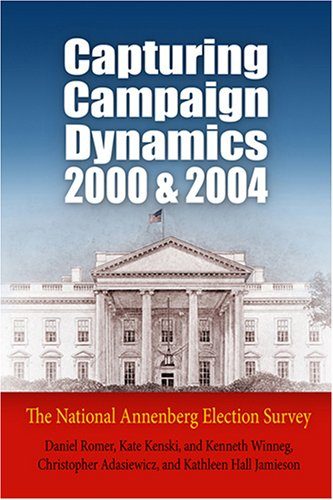One in five general election voters in 2004 reported that they cast their ballots before Election Day, the University of Pennsylvania’s National Annenberg Election Survey shows. That was substantially more than in 2000. Voters were asked whether they cast their ballots on Election Day, or if they had voted before then. Twenty percent of voters
National Annenberg Election Survey
Party Identification by State
Based on answers from registered voters throughout the 2004 National Annenberg Election Survey Kansas, Nebraska and Utah are the most Republican states; Maryland and West Virginia the most Democratic, and Massachusetts, Connecticut and Maine the most Independent.
Bush Inauguration Comes With Nation Still Deeply Divided, Dubious On Iraq, Social Security
George W. Bush will be sworn in this week to lead a nation giving him a lukewarm approval rating, unenthusiastic about his ideas on Social Security, impatient to get out of Iraq and showing no signs of post-election reconciliation, the University of Pennsylvania’s National Annenberg Election Survey shows. In a survey of 1,202 adults conducted
Few American Voters Ever Changed Their Minds, National Annenberg Election Survey Shows
Very few American voters changed their minds during the 2004 presidential campaign, the University of Pennsylvania’s National Annenberg Election survey shows. Just 16 percent of those who voted for George W. Bush said there was “ever a time” when they thought they would vote for John Kerry. And 15 percent of Kerry voters said there
Bush 2004 Gains among Hispanics Strongest with Men, And in South and Northeast, Annenberg Data Show
George W. Bush’s gains among Hispanics were strongest among men, Southerners and Northeasterners, the University of Pennsylvania’s National Annenberg Election Survey shows. In the fall of 2000, only 34 percent of Hispanic men supported him over Al Gore, but in 2004, 46 percent did. Among Hispanic women, his support rose only from 35 to 36
Party Identification Shifts Toward Republicans, But Democrats Still Lead, Annenberg Data Show
Republicans narrowed the gap in party allegiance in the 2004 campaign, but are still outnumbered by Democrats, the University of Pennsylvania’s National Annenberg Election Survey shows. Polling of 67,777 registered voters from October 7, 2003, through November 16, 2004, showed that 31.8 percent called themselves Republicans and 34.6 percent said they were Democrats, a Democratic
Post-Election Polling Shows Public Coming to Believe United States Is “Generally Going in Right Direction,” Annenberg Data Indicates
After the re-election of President George W. Bush, the American public has become more optimistic about the general direction of the country and more supportive of him personally and as president, the University of Pennsylvania’s National Annenberg Election Survey shows. Interviews with 1,307 registered voters, conducted from November 3 through 11, showed that 47 percent
Only 62 Percent of Registered Voters Expect Their Votes to Be Accurately Counted, Annenberg Data Show
As of Election Eve, only 62 percent of registered voters are “very confident” that their votes will be accurately counted, the University of Pennsylvania’s National Annenberg Election Survey shows. Another 22 percent said they were “somewhat confident.” Voters committed to George W. Bush were much more optimistic than those committed to John Kerry. Seventy-nine percent
Early Voting Already Exceeds Record Levels
Early voting is proceeding at a record pace, with 14 percent of registered voters saying they have already voted, the University of Pennsylvania’s National Annenberg Election Survey shows. That exceeded the 13 percent who told the 2000 Annenberg Survey in post-election interviews that they voted before Election Day. Another 11 percent, in the polling conducted
